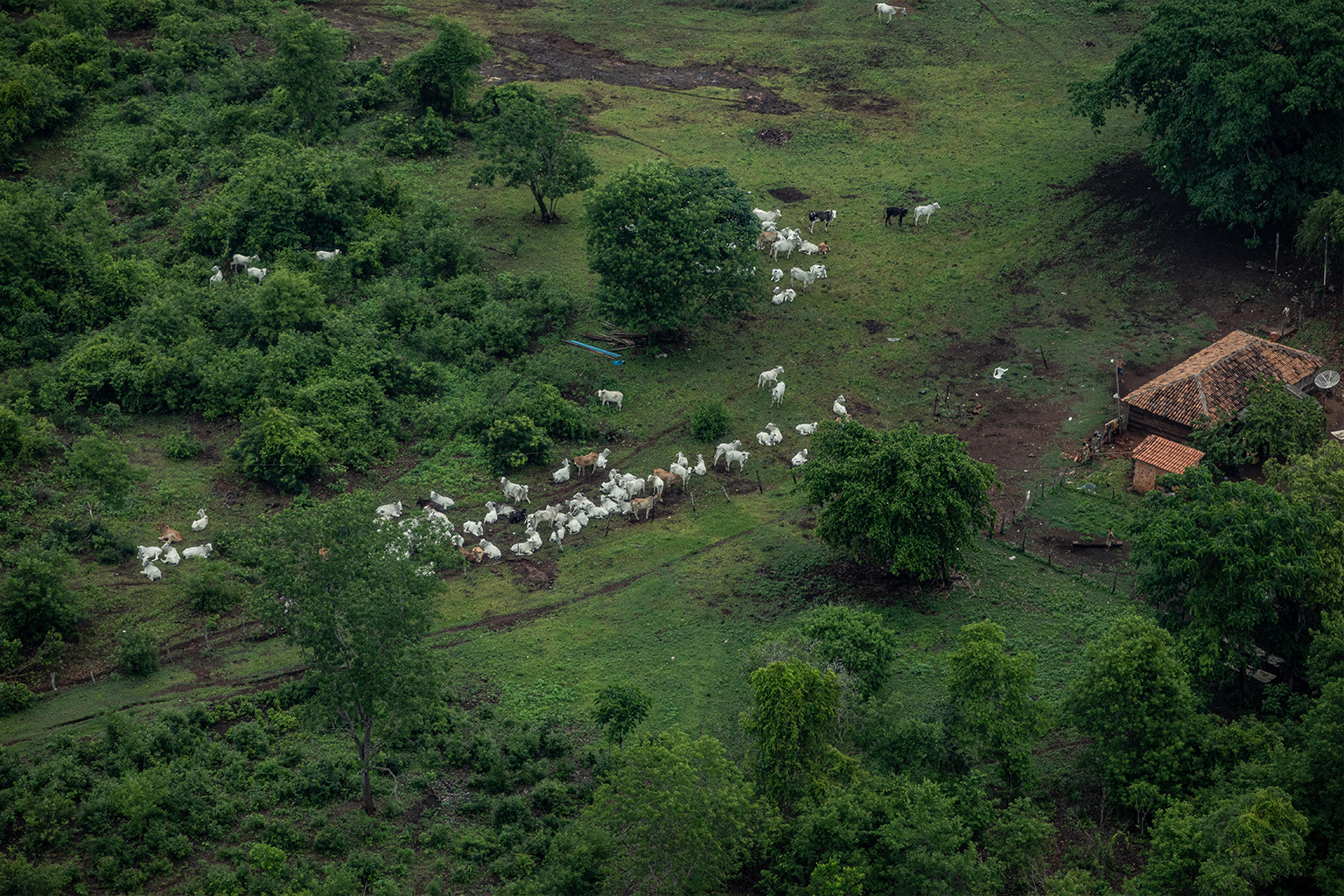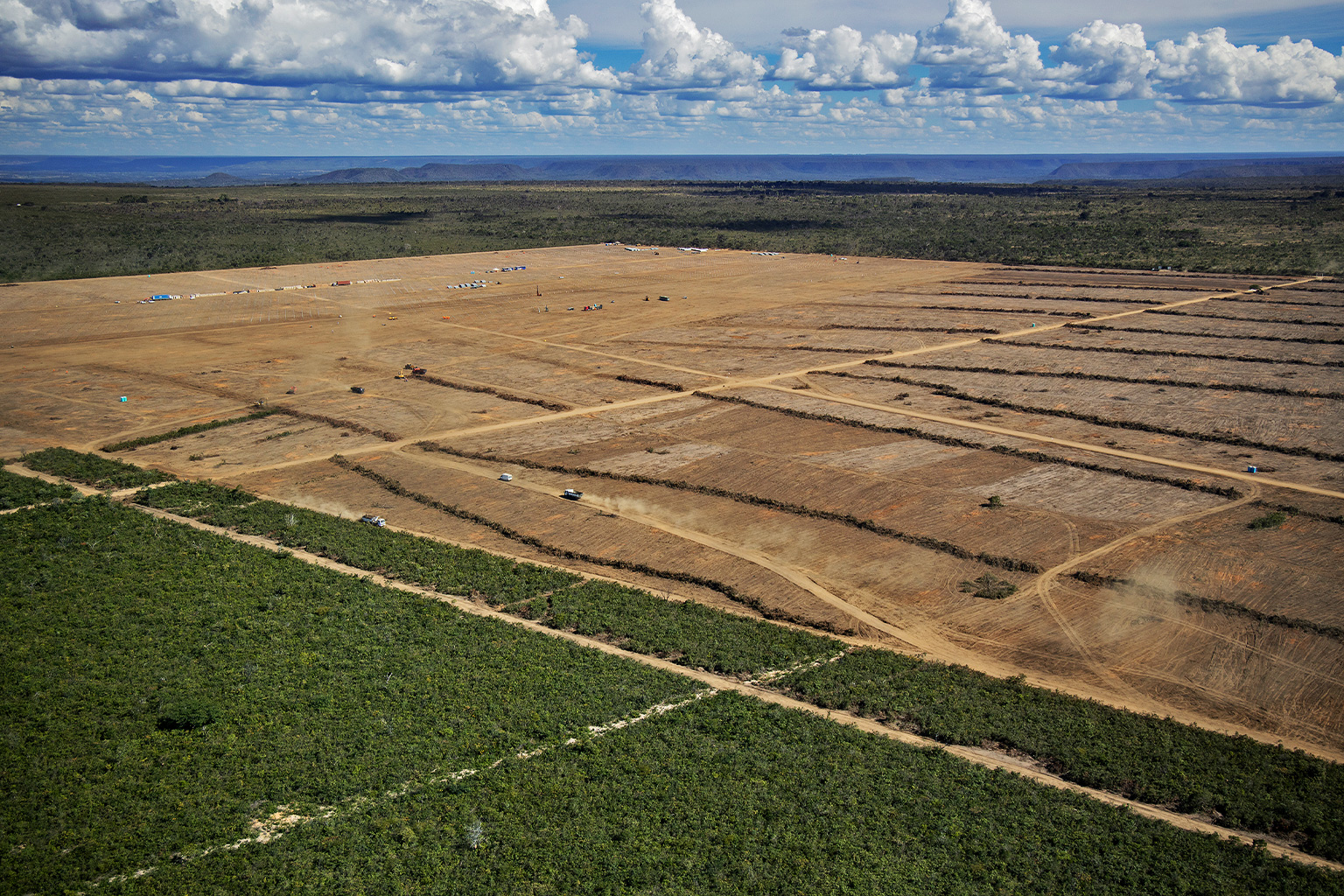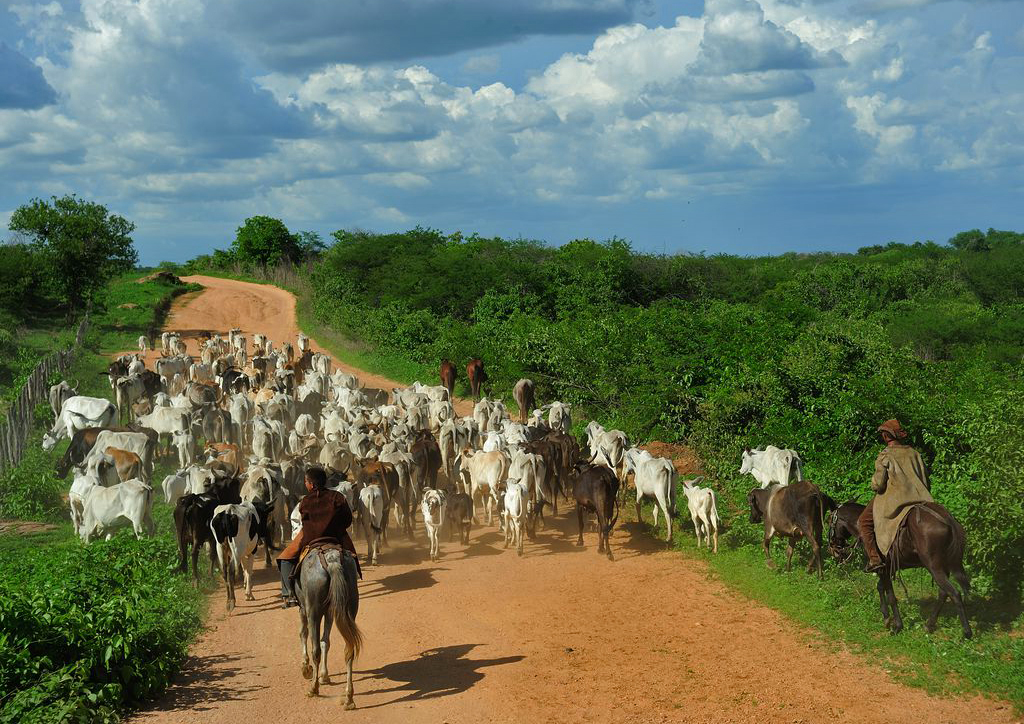- Expanding soy cultivation into underutilized cattle pastureland would help prevent massive deforestation and carbon emissions compared to the current practice of clearing new forest for farmland, a new study says.
- Experts say that Brazil, the world’s No. 1 soy producer and beef exporter, has enough pastureland lying unused that would allow soy production to increase by more than a third without any further deforestation.
- Researchers warn that if Brazil continues with its current method of soy cultivation, it would end up clearing 5.7 million hectares (14 million acres) of Amazon rainforest and Cerrado savanna into cropland over the next 15 years.
- Environmentalists have welcomed intensifying agriculture as a solution to deforestation, but have raised concerns about the potential for increased pesticide use, biodiversity loss, and the expansion of cattle ranching into forested areas.
Soy cultivation and cattle ranching are two of the biggest drivers of deforestation in the Brazilian Amazon. But instead of clearing more forest area for farmland, what if soy was grown on unused pastureland?
That’s what a recently published study sought to model. It found that deforestation could be eliminated and carbon emissions slashed if Brazil intensified its agricultural sector this way — a win-win for both the economy and the rainforest.
The study, published in Nature Sustainability, found that intensifying crop and livestock systems would stop soybean production expanding into forested areas, allowing Brazil to produce 162 million tons of soybeans over the next 15 years, boosting soy production in the Amazon and Cerrado biomes by 35% without any further deforestation.
“We have areas with a low number of cattle per hectare. If we improve agricultural practices and work with better management practices, we will be able to increase the capacity in the same area,” study co-author Alencar Zanon, an adjunct professor of biology at the Federal University of Santa Maria, told Mongabay by phone.
The Amazon rainforest and Cerrado grasslands, the key areas for soybean production in Brazil, the world’s No. 1 producer of the grain, have swaths of little-used pasturelands that are prime for intensification.
“Cattle ranching in the Amazon is done inefficiently and extensively,” Sonaira Souza da Silva, an agronomist and professor at the Federal University of Acre, who was not involved in the study, told Mongabay by email. “The stocking rate is less than one head of cattle per hectare, but with the application of effective and already known technical practices, it could rise to 2.5 or higher.”

Those technical practices include increasing soybean yields by improving degraded pastures, harvesting two crops in a calendar year, and raising cattle within smaller pastures to free up space for more soy planted area.
The study says that if these changes aren’t made, it will lead to “massive encroachment on the Amazon rainforest, biodiversity loss, and increased global warming.” Under the business-as-usual scenario, up to 5.7 million hectares (14 million acres) of Amazon and Cerrado land would be cleared for cropland over the next 15 years, leading to 1,955 million metric tons of greenhouse gas emissions.
“If we intensify our agriculture, we can certainly eliminate deforestation,” Zanon said. “The only way we have to protect the Amazon rainforest and to reduce global warming is through the intensification of agriculture.”
Most cattle ranchers in Brazil have small herds that graze on vast areas of pasture — the ideal starting point for expanding intensive farming in the country, Zanon said.
“We have enough open land in Brazil that, with sustainable intensification of livestock, we can recover degraded pasture area and so reduce legal deforestation,” Luiza Bruscato, executive manager of the nonprofit Sustainable Livestock Working Group (GTPS), who was not involved in the study, told Mongabay by phone.
Implementing such intensive agricultural techniques and eliminating deforestation could “happen in just a few years,” Marcelo Stabile, a researcher at the Amazon Environmental Research Institute (IPAM) who was not involved in the study, told Mongabay by video call. “We can prompt these changes through policies relating to credit, land tenure and environmental licensing, so that intensification can optimize the use of existing agricultural infrastructure.”


Soy farms driving deforestation
As the world’s largest soy exporter, accounting for 40% of global exports from 2017 to 2019, Brazil is economically reliant on the commodity. But soy production has historically happened at the expense of the environment, turning vast expanses of rainforest and savanna into farmland.
“Much of the increase in agricultural output has occurred from cropland expansion rather than cropland productivity,” the researchers say in the study.
From 2007 to 2019, the total area for soybean production in Brazil expanded by 1.4 million hectares (3.5 million acres) per year — or 3,836 hectares (9,479 acres) per day, three times the size of London’s Heathrow airport. Pastures and croplands have replaced nearly 65 million hectares (160.6 million acres) of forest and savanna in the Brazilian Amazon since 1985, a 2020 study found, with soy production in particular driving massive deforestation rates during the 1990s and early 2000s.
Under Brazil’s Forest Code, farmers must set aside between 20 and 80% of native vegetation on their rural properties as “legal reserves,” allowing a limited amount of legal deforestation for agricultural expansion. However, up to 90% of deforestation is suspected to be illegal, carried out by ranchers, loggers, miners and land grabbers, who seek to profit from the occupation and exploitation of public lands.
“People don’t deforest these lands to produce more beef or soy,” Stabile said. “They do it because they can steal public lands and expect to claim the land titles and resell the land at a higher price.”
Other drivers of deforestation are infrastructure works (such as hydroelectric plants), road construction, mining projects, and forest fires, a 2018 study found.
“Deforestation is complex and has a lot of aspects involved,” Miguel Scarcello, general secretary of the nonprofit conservation group SOS Amazonia, told Mongabay by phone. “However, intensifying production is a good agricultural practice that, without a doubt, will help the Amazon a lot if it’s adopted. I believe it will help reduce the pressure on forest areas.”

Unintended drawbacks
Despite the positive impact that intensification could have on reducing deforestation, critics say it could lead to large monocultures, which bring their own set of environmental hazards.
“One of the big issues of monocultures is the huge use of chemical fertilizers and that their natural reserves are finite,” Silva said. “This will generate instability in the production chain and in the exploitation of natural resources.”
Earlier this year, Brazil’s lower house of Congress cited the shortage of fertilizers, caused by the Ukraine war, to push through a bill that would allow mining for potassium, a key element in fertilizers, on Indigenous territories — even though almost all of Brazil’s potassium reserves lie outside Indigenous lands.
Soy production is also associated with pesticide use, raising concerns that an increase in cultivation would have further devastating effects on the environment.
“If farmers don’t use the techniques correctly and it leads to an excessive use of pesticides, that could be a problem,” Scarcello said.
The long-term impact of pesticide use on soy crops, including the effects on human health and freshwater quality, are little understood, according to a 2020 paper. It found that the herbicides and insecticides used in soy cultivation can be “very toxic to aquatic ecosystems,” including pollinator populations.
As well as being detrimental to the environment, monocultures can also cause or exacerbate social conflicts.

“Monocultures have a more mechanized workforce, which generates fewer jobs in some cases, and they are owned by the same owner who has a concentration of the income,” Bruscato said. “I think these are things that need to be looked at and studied.”
Experts say that while using existing cattle pastures could eliminate the tree loss associated with soy cultivation, it could end up causing an increase in deforestation for more pasture. “We need to monitor if the replacement of pasture with soy isn’t simply pushing pastures into other areas and causing more deforestation for livestock,” Silva said.
Banner image: The stark contrast between swaths of thick rainforest and the plowed fields of crops in the Matopiba area, the border region between the states of Maranhão, Tocantins, Piauí and Bahia. Image © Marizilda Cruppe/Greenpeace.
Citations:
Marin, F. R., Zanon, A. J., Monzon, J. P., Andrade, J. F., Silva, E. H. F. M., Richter, G. L., … Grassini, P. (2022). Protecting the Amazon forest and reducing global warming via agricultural intensification. Nature Sustainability, doi:10.1038/s41893-022-00968-8
Pollack, H. (2020). Pesticide footprint of Brazilian soybeans (Master’s thesis, Chalmers University of Technology, Gothenburg, Sweden). Retrieved from https://odr.chalmers.se/server/api/core/bitstreams/b580e0f2-e941-4c83-bcda-34ffdbd5d9b4/content
Sauer, S. (2018). Soy expansion into the agricultural frontiers of the Brazilian Amazon: The agribusiness economy and its social and environmental conflicts. Land Use Policy, 79, 326-338. doi:10.1016/j.landusepol.2018.08.030
Stabile, M. C. C., Guimarães, A. L., Silva, D. S., Ribeiro, V., Macedo, M. N., Coe, M. T., … Alencar, A. (2020). Solving Brazil’s land use puzzle: Increasing production and slowing Amazon deforestation. Land Use Policy, 91. doi:10.1016/j.landusepol.2019.104362
FEEDBACK: Use this form to send a message to the author of this post. If you want to post a public comment, you can do that at the bottom of the page.
Related reading:
Bad weather knocks down Brazil’s grain production as ‘exhaustively forewarned’
